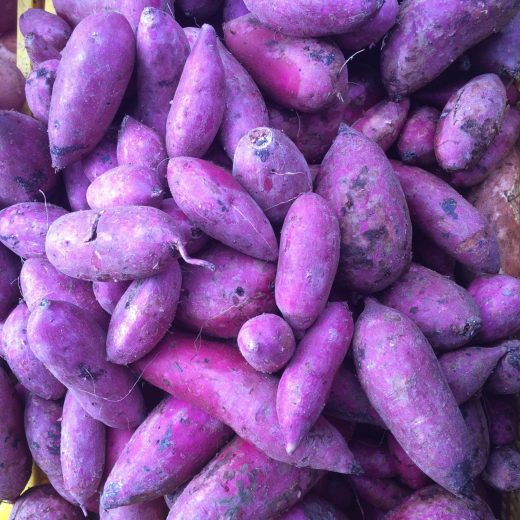
This edition of Weekly Bites gives the latest on emerging cuisines in the American culinary scene.
Immigrant communities have been a cornerstone of American cuisine since the days of Ellis Island. While different communities initially opened restaurants in order to serve their own communities, Americans started to take note of the different and tasty creations that were coming out of these diverse kitchens.
Some cuisines — like Chinese or Mexican — underwent transformations in order to be more palatable to the American palate and continued to evolve with second and third generation families. Others remained in their own neighborhood, waiting to be discovered by the culinary industry.
Today, there is more of an understanding that what one person calls “ethnic” cuisine, another person calls “mom’s food.” The culinary industry is becoming more diverse than ever, and as such more cuisines are being represented. Second and third-generation chefs are leading the way in showcasing the sophistication of their cultural foods.
This week’s Weekly Bites takes a look at three emerging cuisines that are having their moment on the mainstream culinary stage.
A purple yam taking center stage
In 2012, Andrew Zimmern declared that Filipino food would be the next big thing. In 2017, Anthony Bourdain (RIP) made the same declaration. Yet, Filipino chefs have been part of the culinary industry for quite some time — they were just cooking more mainstream foods.
Now in 2022, a collective of Filipino chefs around the country are putting Filipino food first, and showing the culinary industry that this unique cuisine has a place anywhere in the industry, from fine dining to fast food.
Chef Paolo Dungc, co-owner of Pogiboy in Washington D.C. says, “I feel like we are in an era of Filipino chefs that are cooking unapologetically…The biggest challenge we have sometimes is our own people. They put us in a box where [our dishes] are always compared to home-cooked meals.”
At the forefront of the Filipino cuisine movement is a purple yam called ube. This vibrantly purple yam has a sweet and starchy flavor that serves as the perfect introduction to Filipino cuisine. From fine dining restaurants to Trader Joe’s, ube is making its way into the American restaurant and pantry.
At the heart of this story is a community of chefs who are thinking about their cultural food not just as comforting home-cooking, but as a culinary tradition worthy of fine dining kitchens. Food viewed as “ethnic” often gets delegated to the categories of street food, or home cooking. What are some ways the industry can move beyond that to incorporate cuisines from around the world into the culinary canon?
These tasty additions to your bar come from… where?
Different groups in Africa have been making liquor since recorded history. With most of the focus on European, South American, and Asian spirits, however, African spirits had previously remained local.
As consumers are focusing on the quality of liquor in their cocktails, the beverage industry is turning to new locations to find the very best liquors and spirits to meet the need.
Nigerian ogogoro or akpeteshie, is a liquor made from sugar cane or palm wine and is popular throughout West Africa. Daniel Idowu, the director of Value Africa, is bringing ogogoro and other African liquors to the U.K. beverage scene. Besides bringing African liquors to a global market, Idowu is connecting big city distilleries with the countryside farms that grow and harvest the ingredients.
Beyond drinks, West African cuisine is gaining major traction in the American food scene.
Using spirits produced in different countries can give your establishment a great opportunity to tell a story with your cocktail menu, support local farmers in a global way, and experiment with new flavors.
Rethinking Jewish food
For the general American public, thinking about Jewish food elicits images of matzah ball soup and deli sandwiches. While delicious, these foods represent only a very small portion of what Jewish food is. Most Jewish people in America are Ashkenazi Jews, meaning that they trace their heritage to Eastern European countries. As such, some of the most popular Jewish food in America hails from that region.
What is less known, however, is that Jewish populations have existed around the world, from the Middle East to different parts of Africa, Central and South America, and even China. Each Jewish community developed their own unique culinary traditions.
Jewish chefs across America are starting to share their culinary traditions beyond Ashkenazi Jewish food. Chef Einat Admony of NY opened Balaboosta in NYC. Her food reflects her own Yemenite and Iraqi Jewish heritage. Michael Twitty further defies expectations of what Jewish food is thought to be, by highlighting his own food journey as an African American Jew in his cookbook KosherSoul.
In Richmond, Virgina, a restaurant called JewFro is bringing the Jewish and African American communities in conversation with each other through food. Jewish communities in America have historically been involved in civil rights activism. JewFro is bringing these two communities together again to think about their different experiences of diaspora, through food.
Just like there is no one “American” cuisine, when learning about the cuisines of different cultures it’s important to remember the diversity that informs different culinary traditions. What are some ways you can look to your own local community to learn about new-to-you culinary traditions?
~~~~
Chef Works blends fashion and functionality to provide chefs and other industry workers with apparel that looks good and gets the job done. Have you explored our online catalog today for the latest styles?


